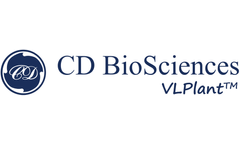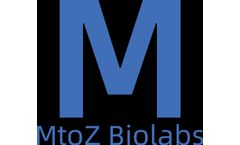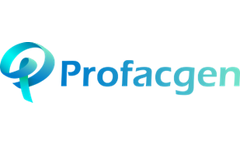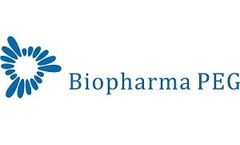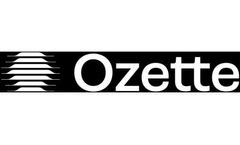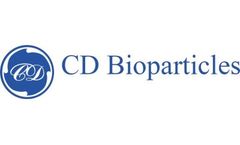Cancer Drug Articles & Analysis: Older
43 articles found
Therefore, comprehensive drug development is pivotal in addressing these challenges and enhancing therapeutic outcomes in brain cancer treatment. ...
Cancer is a worldwide disease and one of the leading causes of morbidity and mortality today. ...
By introducing a functional gene into the cells with these symptoms, researchers hope to correct the inherited gene mutation and potentially cure the disease. Gene delivery in cancer treatment involves the use of viral or non-viral vectors to deliver therapeutic genes into cancer cells. These approaches allow the targeted delivery of genes that can inhibit ...
Disease MechanismsStudy changes in oxidative phosphorylation in various diseases (such as neurodegenerative diseases, cancer).3. Drug Screening and Toxicity TestingEvaluate the impact of drugs on mitochondrial function.Precautions1. ...
Alfa Cytology has announced pancreatic cancer vaccine development services to improve the efficacy and safety of related vaccines. Alfa Cytology, a biotech company composed of scientists, bioinformatics, and oncologists, has recently announced its pancreatic cancer vaccine development services to provide further strategies for cancer therapy ...
Alfa Cytology has announced its small molecule drug development to advance preclinical cancer research. Alfa Cytology, a comprehensive biotech company specializing in cancer research, has recently announced the cancer small molecule drug development services. ...
Alfa Cytology has announced tumor models customization service for pancreatic cancer research. Alfa Cytology, a biotech company specializing in cancer research, has recently unveiled the service on pancreatic cancer tumor model customization to dig into the generation and development of pancreatic cancer and correspondingly ...
They are essential in unraveling the molecular mechanisms underlying cell death and are instrumental in drug development, cancer research, and developmental biology. Types of Apoptosis Assays Morphological Assays: These assays examine the characteristic morphological changes that occur during apoptosis. ...
To begin with, SN38-BSA is composed of SN38, a potent anti-cancer drug, and BSA or Bovine Serum Albumin. SN38 is the active metabolite of the prodrug irinotecan, commonly used in chemotherapy. ...
The classical mode of action of small molecule drugs is "occupancy-driven". Since the FDA approved the first oral small molecule targeted therapy for tumors-tamoxifen targeting the estrogen receptor (ER)-in 1977 for the treatment of breast cancer, small molecule drug development has typically focused on screening for high-affinity inhibitors. ...
This conjugate can selectively deliver the drug to disease-related cells, such as cancer cells, thereby increasing efficacy and reducing toxicity to normal tissues.ADC is a complex composed of an antibody and a drug (usually a cytotoxic drug). The antibody component specifically targets surface antigens on specific ...
Car-t cell therapy involves genetically engineering T cells isolated from patients or allogeneic donors to express chimeric antigen receptors (CAR) that specifically recognize and kill tumor cells. As a "living" drug, CAR-T therapy is very different from traditional drugs. It is a new type of precision targeted therapy for the treatment of tumors. ...
Repurposing Existing Drugs: By analyzing drug-disease relationships, scientists can discover new therapeutic applications for existing drugs. ...
Two are for HER2 breast cancer ADCs. T-DM1(Ado-trastuzumab Emtansine) T-DM1 is the first ADC drug to target HER2-positive breast cancer. ...
Structurally, an ADC consists of monoclonal antibodies (Antibody) that target specific antigens on tumor surfaces, cytotoxic drugs (drugs) that kill tumor cells, and linkers (Conjugate/ linkers) that conjugate cytotoxic drugs to antibodies. ...
The company has recently launched TCR-seq, a powerful service that enables rapid and efficient analysis of T-cell receptor (TCR) diversity and clonality, providing critical support for immune and cancer research. As immunotherapy gains widespread use, increasing attention is being focused on T-cell clone diversity and clonality, which is crucial for evaluating the effectiveness ...
Antibody-drug conjugate (ADC) is one of the fastest growing fields in tumor therapy, which consists of monoclonal antibody (Antibody), linker (Linker) and active drug (Payload). ...
Summary Inflammation is a hallmark of the tumor microenvironment and an area of active investigation. To better understand how tumor inflammation differs from general inflammation, such as in gum disease, Drs. Prilic, Mair, and Erikson employed novel methods, which included high parameter flow cytometry and Ozette’s foundational technology–full annotation using ...
Owing to the strong optical absorption and scattering properties, the gold nanocages are a new class of gold-based multifunctional platforms for contrast enhancement of optical imaging, photothermal treatment of cancer, and on-demand drug delivery. Are gold nanocages different from gold nanoparticles? ...
With high specific targeting ability and strong killing effect, it has achieved precise and efficient removal of cancer cells, and has become one of the hot spots in the development of anticancer drugs. In 2000, the FDA first approved the ADC drug Mylotarg (gemtuzumab ozogamicin) for adult acute myeloid leukemia (AML), marking the beginning of ...



